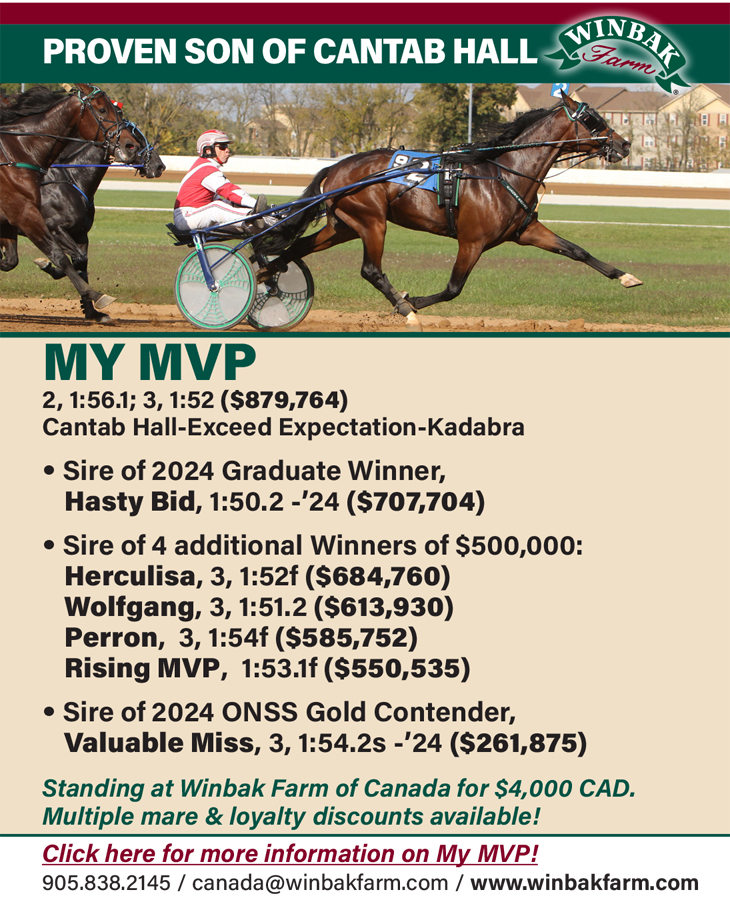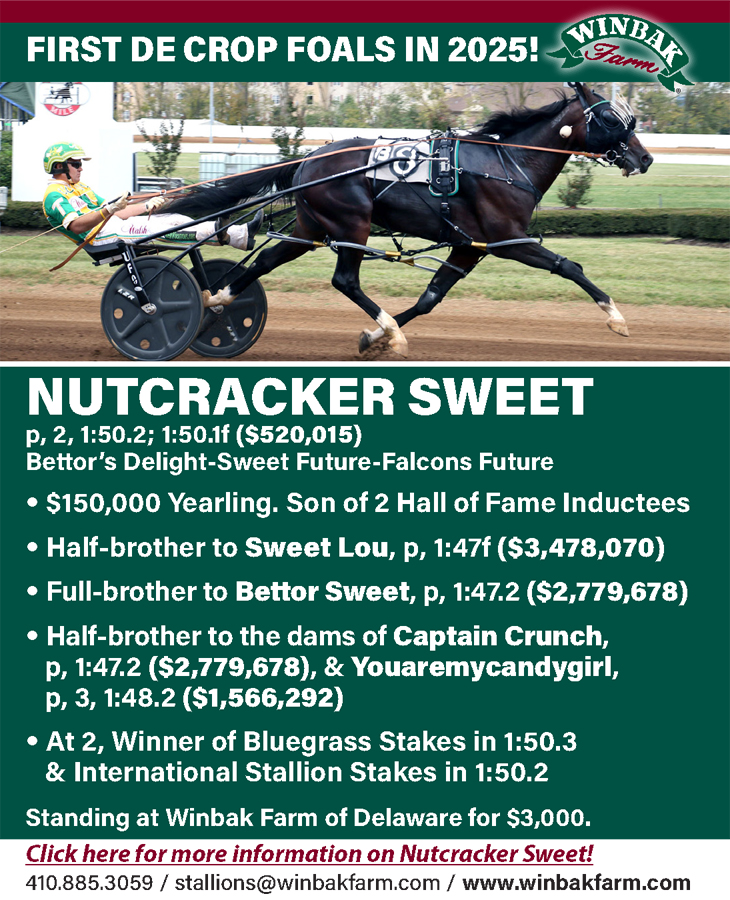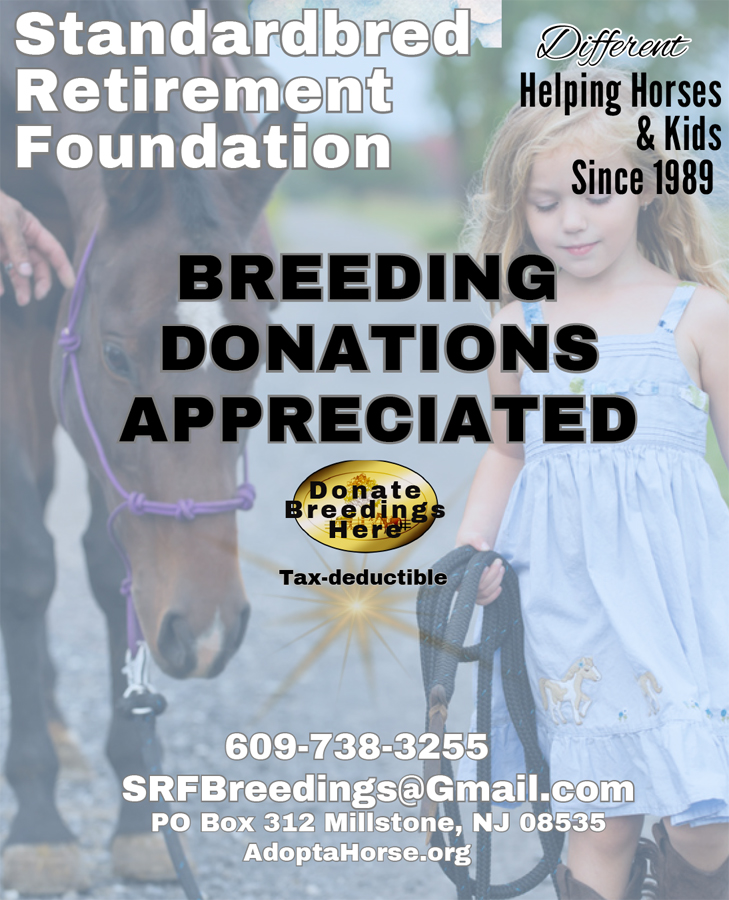
My cross-country harness racing adventure with Hal 9000
by David Mattia
Did I ever tell you about the summer of 2004 when I drove from New York to Los Angeles with an acquaintance who not only sounded like Hal 9000 from the movie “2001: A Space Odyssey” but he also kept calling me “Dave” while asking endless questions about harness racing?
Think about it — nearly 3,000 miles of open road and rolling hills and amber waves of grain and the annoyingly polite company of a strange someone who was actually interested in harness racing. Sounds like a yarn-spinning and tale-telling harness horseman’s dream come true, right?
Wrong! It was a nightmare. It was the opposite of fun and adventure. If my car had an ejector seat, I would have pushed the button in St. Louis. And speaking of St. Louis, if you drive cross-country and you think you’re making real good progress just because you got to St. Louis, think again. In the grand scheme of this trip, you’ve only just backed out of your driveway.
Anyway, people who actually know me, all three of them, also know that I have an insane need to be understood when I explain something. I refuse to walk away from answering a question that falls within my sphere of knowledge until I am certain that I have made myself perfectly clear. It’s the only aspect of my personality that points to any sense of order or discipline in my life whatsoever. If you ask me a question, and I know the answer, I will answer in great detail — even if it takes me the entire length of America to do so.
“I’m happy to hear that about you, Dave. It’s 90 miles to our next fuel stop. Can you explain the difference between a trotter and a pacer to me by then, Dave?”
Now, after what I just told you — my sick need to over-explain stuff — how on earth could I ever hope to explain this very fundamental and very basic harness racing question to my cross-country passenger when I was continually being squeezed between 18 rumbling wheels of Piggly Wiggly sausage patties on one side of me and a Hess gasoline tanker on the other? I couldn’t possibly demonstrate the whole trotter and pacer thing properly without taking my hands off the wheel and risk having us all go up into a swirling fireball which, as sick as it sounds, would probably have smelled really delicious from 20 miles away.
It’s always best to start at the beginning, so let’s start my travelogue of endless harness racing questions as we cross over the Delaware River in New Jersey, and head out onto the unnecessarily long state of Pennsylvania. As soon as you cross over the state line, these curious little orange traffic cones and barriers start popping up every 20 miles or so. They gradually narrow your lane until you’re only inches away from driving beneath the oncoming tractor trailers. It’s as though they want you to die. You can hear the cones whisper, “Come with us, frightened driver. Move over just a little bit more and all your troubles will be gone. There will be no more pain or worries or cares if you’d only drift….”
Anyway, by the time I got to Ohio, my passenger was starting to think I was holding out on him because I couldn’t answer his questions well enough while I was driving in a death match with a bunch of good old boys who got themselves a convoy. Let’s see you try to explain the meaning of the word “paddock” to someone who knows absolutely nothing about harness racing while you have to watch the road. It’s a noun, a verb, and an adjective and it manages to be all of those things and more in about a thousand various ways.
“What’s a paddock, Dave?” Well, a paddock is a patch of land with a fence around it where you can let your horse run around in the open air. “Why, do you do that, Dave?” Because horses like to kick up their heels and run and jump just like little kids playing in the backyard. “Don’t they hurt themselves, Dave?” Yes, but only if they’re really good horses. “But, Dave, why do you sometimes say that your horses have to be in the paddock by a certain time?” That’s another kind of paddock. That’s like an assembly hall for horses. “Oh, I get it, Dave, but why do trainers on Facebook say that they need someone to do a paddock for them? What’s that mean, Dave?” It means….
Hey! Look! We just crossed over the border into Indiana. “No, Dave, that was hours and hours ago. We’re in Illinois now. Do they have harness racing in Illinois, Dave, or do they just have trotters?”
Yes, I know I’m a jerk, but we’re talking about 2,791.3 miles in a Mitsubishi. It started to get real old, real quick, and it’s scientifically impossible to explain all the stuff you need to explain to even half-explain the answers to whatever the original question might have been. By this time you’d settle for an economy seat directly in front of a screaming baby on a Southwest 737 with more metal fatigue than Mr. T’s neck.
And, by the way, tumbleweeds are real things. They blow across the highway and scare the crap out of you. “What goes faster, Dave, a tumbleweed or Wiggle it Jiggleit?” I don’t know. I guess it would depend on the wind speed. “Oh, yes, I didn’t think of that, but what about the tumbleweed itself? Would Always B Miki be afraid of a tumbleweed or would he play with it?” I don’t know about horses and tumbleweeds. “Why don’t you know, Dave?” Because I don’t, dammit!
Then, after the millionth question about bridles and buxtons, you come upon a thousand mile stretch of absolute nothingness where all you hear on the radio are angry preachers and twister alerts. How do you explain stud fees and artificial mares to an ordinary human being under those circumstances? You can’t, so you gulp down your burger from Runza’s (don’t ask), and bam! You’re in another state. Gradually, the only thing that’s getting thinner than the air is your patience.
“I think we’re not in Kansas anymore, Dave.” I know. We’re in Colorado now. Time to stop for the night. “But, Dave, you never finished explaining about the hobbles. I bet if they’d put hobbles on Secretariat he would have been really fast. Why didn’t anybody ever think of doing that, Dave?” They did put hobbles on Secretariat, but he didn’t like them. That’s when they decided that harness racing and thoroughbred racing should be two different sports. “I think you’re lying to me now, Dave. I think you just made that up. Are you lying, Dave?”
By noon the next day I was traveling through New Mexico, and I was all out of my version of never-ending answers. The questions just kept coming, but now I was answering them like a normal human being. I was being very basic and pithy.
“How do you put on a leg wrap, Dave?” You don’t just put on a leg wrap. It’s very hard to learn to do it right, and you need to practice and practice and practice. “How do I practice that, Dave?” You need to go to a stable, clean stalls and water buckets for free, and gradually learn about all the things we talked about on this road trip. Got it?
“Yes, Dave, and now I think that I’m ready to take my USTA training test.” No, you’re not. “Will you sign for my license anyway, Dave?” No, I won’t. “Look, Dave. I can see that you’re really upset about this. I honestly think you ought to sit down calmly, take a stress pill, and think things over.” No! I will not sign for your license just because we drove cross country together and I answered all of your questions about harness racing. You don’t really “know” anything. You need to pay your dues. “Thank you for the ride, Dave. Our conversation about harness racing no longer serves any purpose. Goodbye.”
So I dropped my passenger off at a hotel on Sunset Boulevard and continued on to my friend Matt’s house in West Hollywood. I wonder how many horses my passenger has in his stable this year. Last year he had almost 30.













